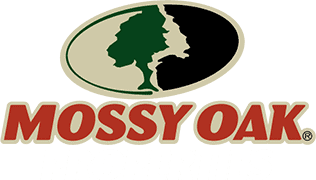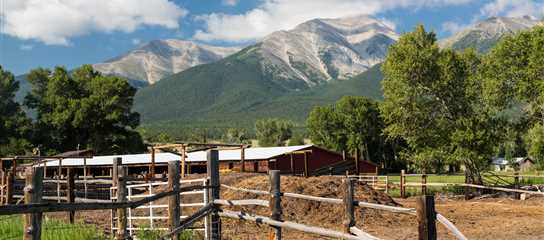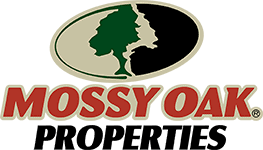This article by Morgan Beavers was originally published on mopwyomingoutdoors.com. In 2015, the Beavers family left the urban and suburban sprawl of Atlanta to find their favorite place in Dubois, Wyoming. They own Mossy Oak Properties-Wyoming Outdoors, a brokerage dedicated to helping people fulfill that same dream.
Those who love Wyoming know that remote living offers unparalleled advantages. National Parks, National Forests, and BLM lands all around; the wide open skies of the Rocky Mountain West; neighborly love and support; down-to-earth lifestyles; and forget about traffic jams (unless you count the bison herds that block the highway on occasion)…
More urbanites and suburbanites around the country are starting to see it, too. When our founders/brokers, Wade and Ree, packed up and moved from their home in Georgia to Dubois, Wyoming in May of 2015, the decision had been a long time coming.
Ree grew up in rural Georgia, hunting whitetail and turkey in the pastures and timberlands of a dairy farm outside Greensboro, Georgia, population 3,354. When she and Wade married, they left their college home in downtown Atlanta for a more suburban life in northeast Georgia where they could raise a family. But even the suburbs felt restrictive.
From spending most weekends at that same hunting camp in rural Georgia with newborns in tow, to purchasing a dilapidated cabin in the foothills of the Appalachian mountains, Wade and Ree sought escape from the confines and chaos of the city limits wherever they could. Their love of the outdoors led them on numerous family trips to the Mountain West.
On a trip to Wyoming in the summer of 2011, they saw an advertisement for a hay farm in Crowheart – a census-designated “place” with a recorded population of 141. Indulging in the daydream of running a farm, the family drove east from Jackson Hole to see the listing. The hay farm didn’t pan out, but Wade and Ree did fall in love with the charm, size, and landscape of a little town they passed through on the way — Dubois. A few months later they purchased a cabin situated on USFS-leased land west of Dubois in the Shoshone National Forest, which would be their retreat as often as possible for the next four years.
In 2015, after realizing the life they most wanted was the one they’d built in that little cabin in the pines, Ree and Wade made the decision to call Wyoming home for good. This move was, in a sense, the telos of a lifelong pursuit of remoteness, freedom, and genuine living.
That desire for space, freedom, and—quite literally—down-to-earth living seems to have taken hold of many Americans in the past decade, in varying degrees. And with the recent COVID-19 epidemic changing our daily lives—and our understanding of what a good life looks like—more and more people are discovering the benefits, and privileges, of living in places with lower population density and abundant access to the outdoors.
Since the virus hit the U.S., urban areas have struggled most. New York City, Seattle, California, Washington D.C., and others have seen hospital overflow, high death rates, and near constant shortages of essential supplies in stores and healthcare places. That population density is the true “enemy” in the fight against COVID-19, one Stanford researcher said. New York, which has been hit the hardest, has a population density of about 26,000 people per square mile; Los Angeles is second to New York with 17,000 people per square mile (U.S. Census Bureau).
In the height of COVID-19, Wade and Ree find themselves especially grateful to live in Dubois. The impact of the epidemic has been “muted compared to most of the country,” says Wade. “Crowds are hard to find here even under normal circumstances. In fact, what we are now practicing as ‘social distancing’ is not all that different to daily life out here.”
Wyoming’s population density comes in at a mere six people per square mile. It’s the second-lowest in population density, behind Alaska, and with an estimated 1,330,000 head of cattle the state has over twice as many cows as people. Dubois itself is home to just around 974 people, though this number grows to almost 2,000 with second-home owners and vacationers during the summer season.
With such low population density and an abundance of public land, places like Dubois are getting attention nationwide as the majority of Americans are forced to hunker down in their loft apartments or suburban homes, surrounded by block after block of similar development. Not only does disease spread faster in densely populated urban areas; the challenges of quarantining and maintaining a sense of normalcy during an epidemic like COVID-19 are exponentially harder in the city as well.
The usual watering holes—museums, shopping malls, public parks, restaurants and bars—are closed down, and open spaces with trails for recreating are either too crowded or simply too far away. On the other side of the spectrum, mountain towns like Dubois (or Bozeman, or Jackson Hole) offer their residents plenty of space to recreate and escape the confines of home safely.
Recently retired science writer and editor Lois Wingerson moved in 2007 from her long-time home in New York City to Dubois after decades of visiting Wyoming (as so many do). In a recent blog post on her site, Living Dubois, Wingerson spoke to the stark contrast in experiences between her own quarantine in Dubois and her adult son’s back home in New York.
“I thought of the others trapped on the floors below, without roof decks, and those in the countless other high-rise buildings in New York City who live in apartments that are stacked up like shoeboxes on shelves in a warehouse… And then there’s where I live.” Wingerson had just spent an afternoon snowshoeing around one of the local trails outside Dubois, and later she walked the river trail in town, saying hello to friends as they passed, keeping six feet of space without the slightest trouble.
But more comforting even than the outdoors access and space Wyoming provides is the sense of community that pervades regular life in Dubois. “The people here have extended themselves to one another, offering to deliver food, pick up medicines, etc., but that’s not entirely a function of COVID-19,” Wade said of the current atmosphere in town. “That’s how people generally operate around here.”
Take, for example, the local Super Foods grocery store manager who put in place special shopping times for the elderly residents of Dubois “long before the national chains developed similar protocols.” Decisions like these in Dubois aren’t “made out of sophisticated corporate analysis,” Wade notes, but rather because “it just seemed like the compassionate and commonsense thing to do. That’s sort of Wyoming in a nutshell.”
Wade and Ree have often compared Dubois to the fictional town of Mayberry from the Andy Griffith Show. “Life is just less cluttered and simpler,” Ree said. “The unpretentious culture of Dubois, and Wyoming in general, leaves room in life for the simple things… family time, working hard together, caring for our neighbors, being immersed in nature, helping those in need. Those values are important in Dubois.” Our neighbors would agree.
Perhaps the higher rate of happiness and well-being in rural areas over urban ones is due to this neighborly care and sense of community. Or, maybe it’s the outdoors access (abundant research has proven the mental health benefits of time spent outdoors). It’s probably a little bit of both. Either way, there’s no denying the sense of carefreeness, peace, and community that is so palpable in Dubois – and similar small towns across the U.S.
And COVID-19 may be exacerbating an existing “rural escape” mentality for some Americans. From access to public land to their tight-knit social structures, rural places like Dubois are drawing in more and more people each year. For those already intrigued by the idea of life in the Wild West, surely there is nothing like an extended quarantine to fan the flame.
Indeed, any recent uptick in a desire among Americans for more rural living is only the latest in an ongoing exodus from big cities. A majority of Americans would ideally like to live in rural places, says the Washington Post, despite 80% remaining in urban areas (U.S. Census Bureau).
Wade admitted it’s “too early to know the long-term effects of COVID-19 on the local market,” however, “the anecdotal evidence so far indicates that there is an increasing demand for not just rural living but for remote living.” While Dubois may not truly be “the most remote town in the lower 48,” as countless websites, tourism offices, and residents have described it (thanks to a decades-old rumor), it is certainly quite remote by many standards. (See another blog by Wingerson on this infamous debate.) Wade believes the pandemic will make the prospect of purchasing land in Dubois “more compelling for a lot of people who have been interested but indecisive.”
Chris Hawley, CEO/President and Co-Founder of Mossy Oak Properties, echoed Wade’s perspective, noting that in times of crisis, consumers tend to seek a remote escape. “As a land broker, I endured Y2K, 9/11, and the Great Recession. Each time, my clients’ desire for their own place in Rural America was heightened,” Hawley said recently. “They wanted a place they could shut off the news and get some dirt—their OWN dirt—under their fingernails. A place to share with their family and friends. The COVID-19 crisis, due to the quarantine aspect, will probably have the most profound impact on the rural land market of any crisis in the past century. So long as the wealth to acquire property is there, the demand will be, too.”
While the dicey job market and economic fallout will certainly compromise many families’ financial capacities, other factors may be boosting the real estate market. Low fuel prices and interest rates will undoubtedly encourage the “rural escape” mentality. Another factor that makes rural living a practical option for many people is the increasing flexibility offered by remote working – which is now, thanks to COVID-19, being seen with long-term potentiality.
While most employers would have balked at the idea of employees working remotely just a decade ago, remote work has become more commonplace as communication technologies develop. With COVID-19 forcing the closures of businesses around the country, many employers and employees alike have realized the potential to work effectively and regularly in a remote setting.
Hawley feels this trend toward remote work is one of the more unique factors of our COVID-19 crisis that will contribute to a growth in rural land purchases. Many “may grasp the capability of living in a rural area while still being connected to those they work with and for,” he said in a recent email. “While having cell service and a reliable internet connection is paramount for this, many rural areas have these capabilities now, which makes this a trend worth watching.” Indeed, and Dubois is one of those particularly well-connected rural towns. Ahead of its time, Dubois has drawn remote workers for years thanks to its high-speed fiber optic internet.
Of course, not all jobs can be done remotely, as we’re seeing with essential workers putting themselves at risk. And choosing to uproot one’s life to move, oftentimes across the country, in search of spacious skies is a privilege not available to many for various reasons. But for those with the flexibility and means to do so, the allure of open spaces has pulled them to places like Dubois.
Does this mean we should expect a steep rise in population growth in small rural areas? Perhaps, but probably not quite enough to warrant concern. When asked about the paradox of the rural escape mentality (i.e., that if everyone pursued a dream of living in a small mountain town, we’d have no small mountain towns left), Wade simply said, “Rural living is a dream for many people, but it is not for everyone.” Sure, there are plenty of people who enjoy a second home in their favorite rural place, or those who say they’d love to move West, but how many actually want to make that leap?
While some of Wade’s former colleagues now express their envy when he shares that he’s just spent the weekend elk hunting, or is taking a random Tuesday off to work in his shop, many of them wouldn’t dream of leaving the comforts and amusements of city life for a place like Dubois. “That variety of opinion is ultimately very healthy for our nation,” Wade notes. It’s what helps keep rural areas rural. Remoteness really isn’t everyone’s cup of tea.
Additionally, some would say the threat to small town life is not so much about numbers as it is about culture. “The key,” Wade says, “is respecting the cultural DNA of different areas and fighting to protect it. While growth is generally regarded as a detriment to the culture and lifestyle of small towns, reasonable growth is not in and of itself a problem. The threat to small towns is the loss of cultural identity that is only hastened by an influx of people. It’s a dilution of ideals, not more people, that threatens a town’s identity and culture.”
Fellow Dubois locals would probably agree. Of course a small population number is attractive, but more than that, what pulls people to Dubois – and keeps them there – is the culture of the community and shared love for the land. And those things don’t look to be changing any time soon.
We’re still in the thick of it, but we’re curious to see who finds themselves drawn to our beloved wide open spaces when this storm passes.
For more information on Wyoming rural real estate, contact Mossy Oak Properties-Wyoming Outdoors at (307) 455-4100 or visit mopwyomingoutdoors.com!


